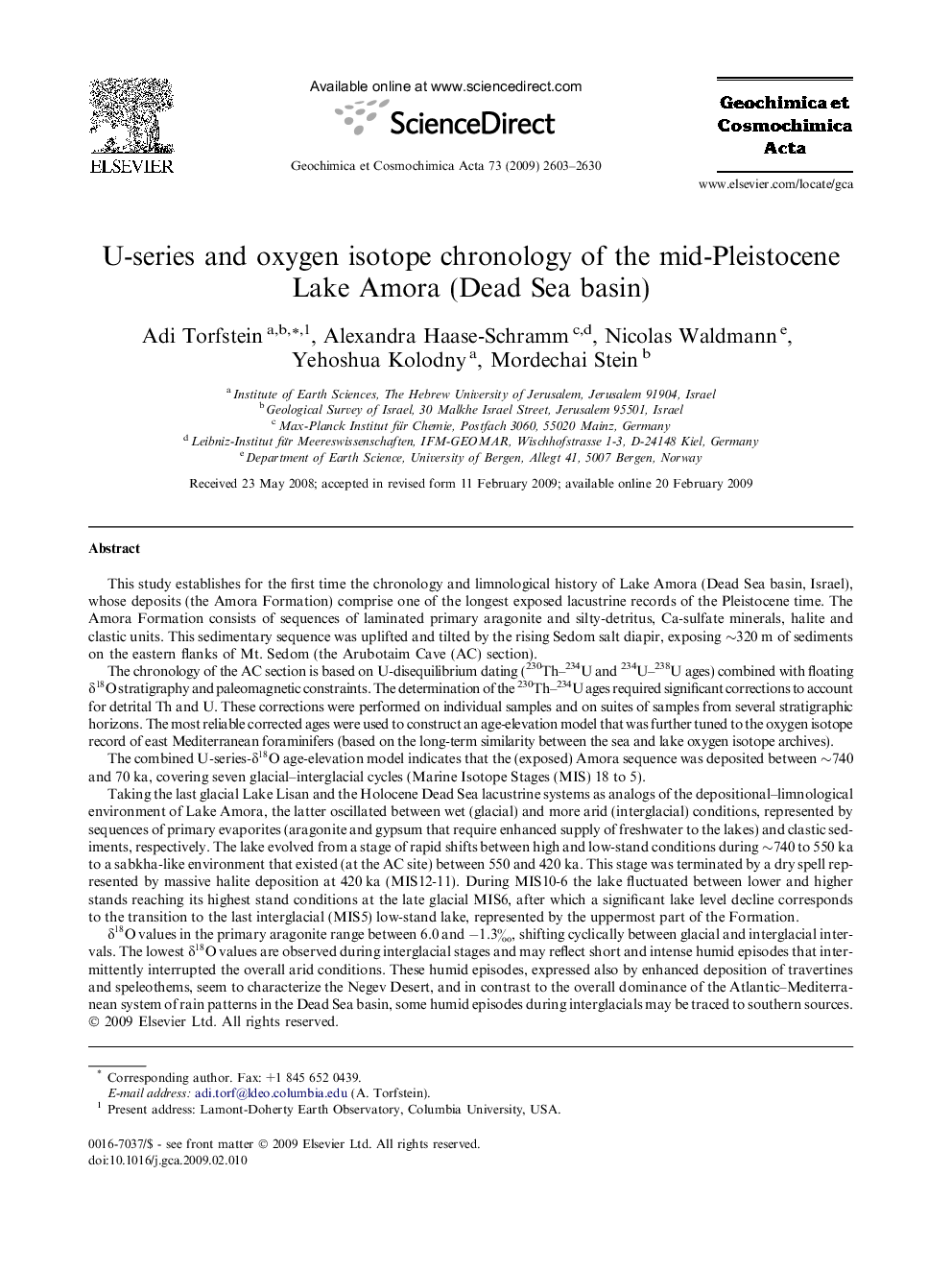| کد مقاله | کد نشریه | سال انتشار | مقاله انگلیسی | نسخه تمام متن |
|---|---|---|---|---|
| 4705073 | 1352941 | 2009 | 28 صفحه PDF | دانلود رایگان |

This study establishes for the first time the chronology and limnological history of Lake Amora (Dead Sea basin, Israel), whose deposits (the Amora Formation) comprise one of the longest exposed lacustrine records of the Pleistocene time. The Amora Formation consists of sequences of laminated primary aragonite and silty-detritus, Ca-sulfate minerals, halite and clastic units. This sedimentary sequence was uplifted and tilted by the rising Sedom salt diapir, exposing ∼320 m of sediments on the eastern flanks of Mt. Sedom (the Arubotaim Cave (AC) section).The chronology of the AC section is based on U-disequilibrium dating (230Th–234U and 234U–238U ages) combined with floating δ18δ18O stratigraphy and paleomagnetic constraints. The determination of the 230Th–234U ages required significant corrections to account for detrital Th and U. These corrections were performed on individual samples and on suites of samples from several stratigraphic horizons. The most reliable corrected ages were used to construct an age-elevation model that was further tuned to the oxygen isotope record of east Mediterranean foraminifers (based on the long-term similarity between the sea and lake oxygen isotope archives).The combined U-series-δ18δ18O age-elevation model indicates that the (exposed) Amora sequence was deposited between ∼740 and 70 ka, covering seven glacial–interglacial cycles (Marine Isotope Stages (MIS) 18 to 5).Taking the last glacial Lake Lisan and the Holocene Dead Sea lacustrine systems as analogs of the depositional–limnological environment of Lake Amora, the latter oscillated between wet (glacial) and more arid (interglacial) conditions, represented by sequences of primary evaporites (aragonite and gypsum that require enhanced supply of freshwater to the lakes) and clastic sediments, respectively. The lake evolved from a stage of rapid shifts between high and low-stand conditions during ∼740 to 550 ka to a sabkha-like environment that existed (at the AC site) between 550 and 420 ka. This stage was terminated by a dry spell represented by massive halite deposition at 420 ka (MIS12-11). During MIS10-6 the lake fluctuated between lower and higher stands reaching its highest stand conditions at the late glacial MIS6, after which a significant lake level decline corresponds to the transition to the last interglacial (MIS5) low-stand lake, represented by the uppermost part of the Formation.δ18δ18O values in the primary aragonite range between 6.0 and −1.3‰‰, shifting cyclically between glacial and interglacial intervals. The lowest δ18δ18O values are observed during interglacial stages and may reflect short and intense humid episodes that intermittently interrupted the overall arid conditions. These humid episodes, expressed also by enhanced deposition of travertines and speleothems, seem to characterize the Negev Desert, and in contrast to the overall dominance of the Atlantic–Mediterranean system of rain patterns in the Dead Sea basin, some humid episodes during interglacials may be traced to southern sources.
Journal: Geochimica et Cosmochimica Acta - Volume 73, Issue 9, 1 May 2009, Pages 2603–2630